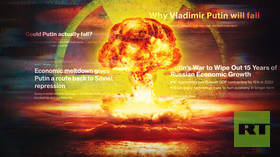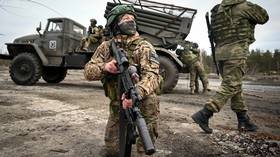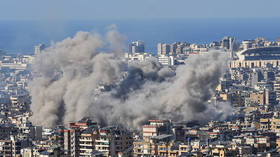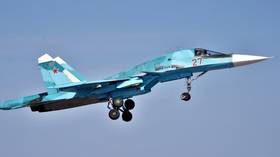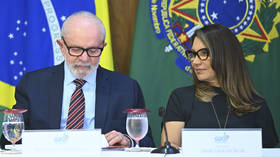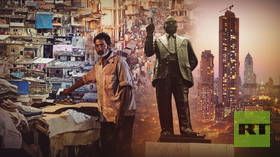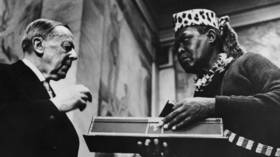We now know why the only credible peace deal between Russia and Ukraine collapsed
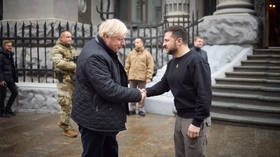
Last week, the Wall Street Journal published new details of the failed Ukraine peace talks held in Istanbul in the spring of 2022. The story resembles some kind of off-the-wall pro-Kiev propaganda along the lines of 'look how Moscow tried to subjugate them, it’s no wonder the Ukrainians refused.'
Today, we’ll try to reconstruct the events and understand why the peace agreements were sabotaged, what role each party played in the process, and whether it was really former British prime minister Boris Johnson who scuppered a deal.
The bifurcation point
For those who don’t remember the exact chronology of the events, here’s a short recap of what happened. Others may just scroll to the next section.
Negotiations on a diplomatic settlement to the conflict between Moscow and Kiev began back in February 2022, four days after the start of Russia’s military operation. The first three rounds of negotiations were held in Belarus, and on March 10, they continued in Istanbul with a meeting of the foreign ministers of Russia and Ukraine.
There were also delegation-level talks between Ukraine and Russia, headed by the Russian-born David Arakhamia (the leader of President Vladimir Zelensky’s faction in parliament) and Vladimir Medinsky (a top aide to President Vladimir Putin), respectively. By April, the delegations had initialed the version of the agreement (along with a list of points on which they disagreed) later referenced by various media outlets and published by the Journal.
Meanwhile, Russia had withdrawn its troops from near Kiev, and the delegations went their separate ways. As it turned out, they would never meet again. Boris Johnson visited Kiev on April 10, and right after his visit, the Ukrainian side withdrew from the negotiation process. Their narrative soon switched to fanciful talk of securing a complete victory.
What was in the agreements that Kiev so suddenly walked away from? First of all, Kiev would have gotten back practically all its territories, including Donbass, in exchange for neutral status. There were certain options on the table even in regard to Crimea – a situation that would now be impossible. But most importantly, these peace agreements were the last chance to prevent what began as a relatively restrained military operation turning into a protracted full-on war.
Historians will argue about events such as Istanbul for decades, and even having access to archives, different researchers will propose totally different versions.
Up until recently, we could only base our opinions on the statements of the participants and indirect information. Now, thanks to the Journal, we can finally put the pieces of the puzzle together and confidently say that the agreements fell through because the two sides had a completely different understanding of the security guarantees that were supposed to be provided to Ukraine. As for the final decision to terminate the negotiation process, this was made by Zelensky.
The devil is in the details
The classic version of events states that Ukraine was ready to sign the agreements, but then Boris Johnson came to Kiev, hugged some pretty Ukrainian railway conductors, and ordered Zelensky to terminate the negotiation process, allegedly saying, “You shouldn’t sign anything with them at all – and let’s just fight.”
Coincidentally, this version was pedaled by the Ukrainian authorities themselves. It was first relayed by Arakhamia. Moscow picked up the story, and it became widely speculated that Kiev had no say in the matter and the Englishman had ruined everything.
However, it turns out that things weren’t quite that simple. According to the newspaper, Moscow proposed the following plan: Under the Istanbul treaty, Ukraine’s security was to be guaranteed by foreign powers, including the US, UK, China, France, and Russia. These countries would be obliged to protect Kiev if the treaty were violated. But as long as the treaty remained in force, the guarantors would be obliged to “terminate international treaties and agreements that are incompatible with the permanent neutrality of Ukraine,” including any promises of bilateral military assistance.
This approach is quite consistent for Moscow:
- Firstly, the Minsk I and II agreements also had external guarantors; Minsk II was approved by the UN Security Council, and that gave it binding, international legal status.
- Secondly, the Medvedev-Sarkozy peace plan used a similar strategy for settling the conflict in South Ossetia in 2008. The European Union then acted as the guarantor, and the agreement was also approved by the UN Security Council.
- Thirdly, as far as we know, China could also have become a security guarantor.
Fourthly, generally speaking, peace treaties signed with the participation of neutral (or armed-neutral) guarantors were a standard practice of the pre-UN era.
Moscow’s understanding of the agreement could be summed up in the following way: Ukraine’s security is guaranteed as long as it complies with the terms of the agreement, the main point of which is its neutral status.
During the negotiations, Arakhamia outlined Ukraine’s version. Within three days of a potential outbreak of war, aggression, a military operation, or any disguised, hybrid war against Ukraine, the guarantor countries would have to hold consultations, following which they would be legally obliged to provide Ukraine with military assistance – particularly by supplying weapons and establishing a no-fly zone.
Ukraine officially said that “this mechanism is even clearer than in Article 5 of NATO, which envisages no limits as regards the timing of consultations.” In other words, in the spring of 2022, Ukraine shouted far and wide that it would sign a treaty that would be more binding than NATO’s promise to members .
This approach is quite consistent for Kiev, which, since the mid-2000s, has longed to get under the “umbrella” of Western military guarantees. In fact, Ukraine strived to join NATO so much that it even made an amendment to its constitution, officially declaring NATO accession to be the country’s main objective.
Kiev’s vision of the agreement implied that the country’s security must be guaranteed by NATO leaders in any circumstances, regardless of Ukraine’s actions.
According to Arakhamia, Boris Johnson then came to Ukraine, told Zelensky “let’s just fight,” and that’s how war started. The situation was further fueled by the Bucha provocation. (By the way, Johnson himself has called the Ukrainian version of events “total nonsense and Russian propaganda.”)
So, what really happened in April 2022? Apparently, upon arriving in Kiev, Johnson told Zelensky (speaking on behalf of the UK, US, and France) something along the lines of: 'You can sign anything you want, but we will not sign anything and we are not ready to provide any guarantees, especially considering your requirements and wording.
'The decision is yours, Mr. Zelensky. If you choose war, we will support you with money and weapons; if you choose peace, you will be left on your own with Putin.'
This matches the West’s subsequent actions and decisions, since so far, no one in the West has taken on any legal obligations in regard to Ukraine. Even the agreements on military assistance concluded this spring are nothing more than a set of declarations which are convenient for the West. Here’s the collective stance of Western leaders: NATO is not ready to provide any guarantees to Ukraine and will not sign any agreements.
If all this is indeed true (and the facts seem to leave no room for doubt), then it was Zelensky who made the fatal decision to stop negotiations. And while the West pushed him to this decision, its leaders also fell into the trap of believing that the conflict could be settled on the battlefield.
At some point, instead of following a rational course, Western elites allowed their emotions to get the better of them. Zelensky convinced them that the Armed Forces of Ukraine could defeat Russia, and they believed this to such an extent that they were willing to risk their political standing and even the future of the entire current liberal world order.
All this has led the West to a decisive fork in the road: What to do if Ukraine loses? Should Western leaders follow the example of Johnson and leave Ukraine alone with Moscow, or should they start a big war with Russia?
Either way, the path that they chose will influence the entire course of world history.

